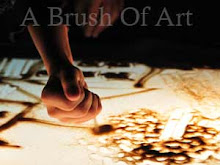Wednesday, August 3, 2011
Biography of Ilana Yahav
Posted by Sand Animation at 9:10 AM 0 comments
Biography of Kseniya Simonova II
The sand story Kseniya presented live on TV was an eight minute story of a young couple separated by the war.
In an interview she said, "It was so emotionally hard, and I now still can not think about those minutes without pain... My hands were dying and reviving making the images."
Kseniya was hoping to get some exposure as an artist, but it became much more. The audience was in tears. As soon as she finished her performance, applause erupted and she received a standing ovation.
Kseniya passed the semi-finals and moved on to the finals. In the third round, she performed a sand story about a son who became successful and forgot his parents. Kseniya wanted grown children to remember their parents and to encourage them to call. After that performance, people came to her in streets saying, "After watching your story, I took the phone and called my mom. I haven’t talked to her in a year. Thank you very much!"
Kseniya was declared the winner of the competition and collected 100,000 euro. She was named an on-line sensation, when in one day her video from the show was viewed more that a million times. In one year, it was viewed over 25 million times. Kseniya understood what happened only after she returned to her native town Evpatoria and could no longer walk freely in the streets. She was surrounded by people, asking for an autograph. On the money they won, Igor and Kseniya bought a house in Evpatoria. They received invitations from all over the world to perform.
In the next two years, Simonova performed over 200 sand stories for audiences in Ukraine, Russia, Norway, Japan, Poland, Austria, China, United Kingdom, Netherlands, Qatar, India, Italy, Germany, Switzerland, Kazakhstan and others.
She was honored to perform for Presidents George Abel in Malta, (2009), Bronisław Komorowski (Gdansk, 2010), Dmitry Medvedev (Moscow, Astana, 2010), Viktor Yanukovych (Kiev, 2010), Nursultan Nazarbayev (Astana, 2010), and for Members of the British Royal Family (London, 2010), and Norway (Oslo, 2010).
In 2009, at the invitation of the President of Malta, George Abel, she performed at the live Charity Ball L’Istrina to raise money for people suffering from cancer. In 24 hours, the performers raised 2.5 million euro.
On December 4, 2009, Simonova presented the first Sand Picture Exhibition. In 2010, she founded an International Cultural Center “Sand Club” in Evpatoriya.
On July 5, 2010, Simonova performed on the anniversary of Astana, the capital of Kazakhstan for an audience of 12 Head of States.
They were Presidents of Russia, Ukraine, Kazakhstan, Belarussia, Uzbekistan, Tadjikistan, China, Armenia, Kirgizstan, Azerbajdjan, Emir of Abu-Dabi and the King of Jordan, and each one received a sand picture of his country from Simonova as a present.
On August 15, 2010 Simonova and her team presented a sand film in memory of a great poet and rock-musician Victor Tsoy.
In 2010, Simonova was invited to open for the Fifth Annual Anti Human Trafficking Awards Ceremony sponsored by the International Organization for Migration in Kiev.
At 26 april 2011, Kseniya Simonova will cooperate with a special made animation at the special memorial for 25 years Chernobyl in Rotterdam 25 years Chernobyl to support the memorial of this terrible disaster that still affects a lot of people in Ukraine and Belarus.
Posted by Sand Animation at 9:00 AM 0 comments
Biography of Kseniya Simonova
Sand Artist
Winner of “Ukraine’s Got Talent”
Posted by Sand Animation at 8:58 AM 0 comments
Biography of Ferenc Cako
Posted by Sand Animation at 8:52 AM 0 comments
Friday, July 15, 2011
Steps of Sand Animation
To creat images in sand animation, we brush into the sand to create areas of light and shade on a back lighting or bright surface. The marks made stay long enough to be captured frame by frame, which are then changed for the next sequence. Therefore, the illusion of movement is created by slowly modifying the sand frame by frame.
c) Brushes
d) Coloured sand
e) 4 rectangular wooden block
f) Panel of claer plastic
Set-up
A table or an elevated platform is required to serve as the work area where the sand is controlled and animated on the plastic frame by frame against a light box. A digital video comera is mounted on a tripod and connected to a computer loaded with Adobe Premiere software for stop-motion capture on the table. An ordinary photographic tripod is usually used and the DVC is positioned such that it points downwards st the light box and would shoot the sand from above.
Posted by Sand Animation at 10:40 PM 0 comments
Monday, July 11, 2011
The performing arts - Sand Animation
Sand animation, also known as sand art, is a term which has two meanings. Sand animation is simply the art of using one's hands to draw with sand. Artists create their master pieces by adding or removing sand from glass table lit from below. By using both positive and negative space, amazing images come to life before the audience. The presentation is often enhanced by the use of music and various lighting techniques under the table. Most performances follow a story line or script. This creates a sense of motion in the imagery and draws the audience into the creation process.
Ferenc Cako
Posted by Sand Animation at 9:56 PM 0 comments







